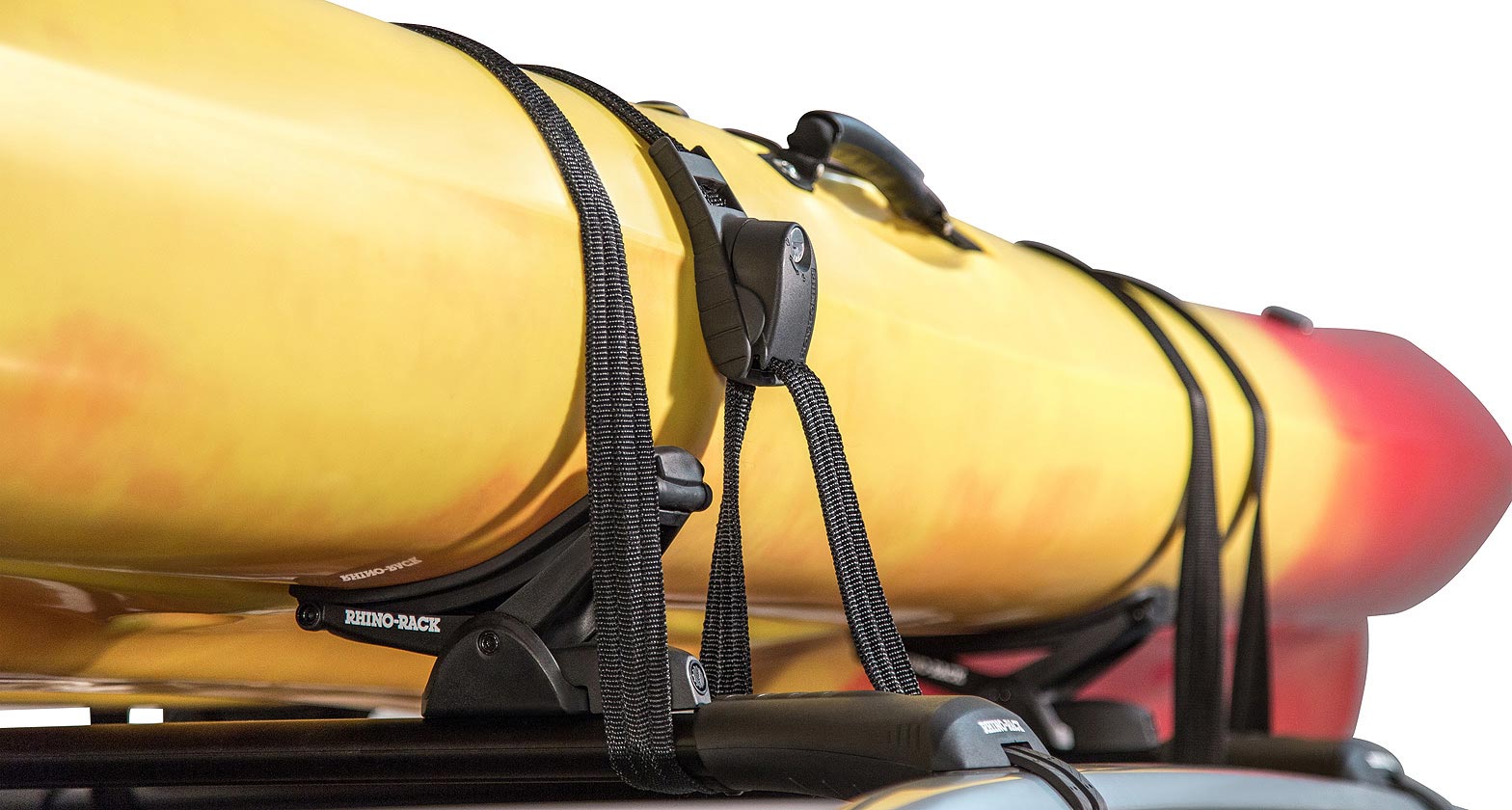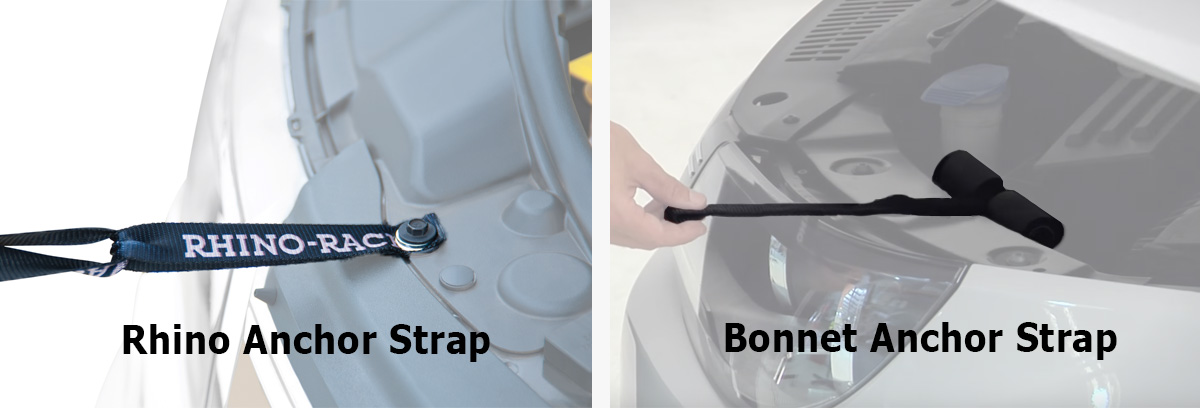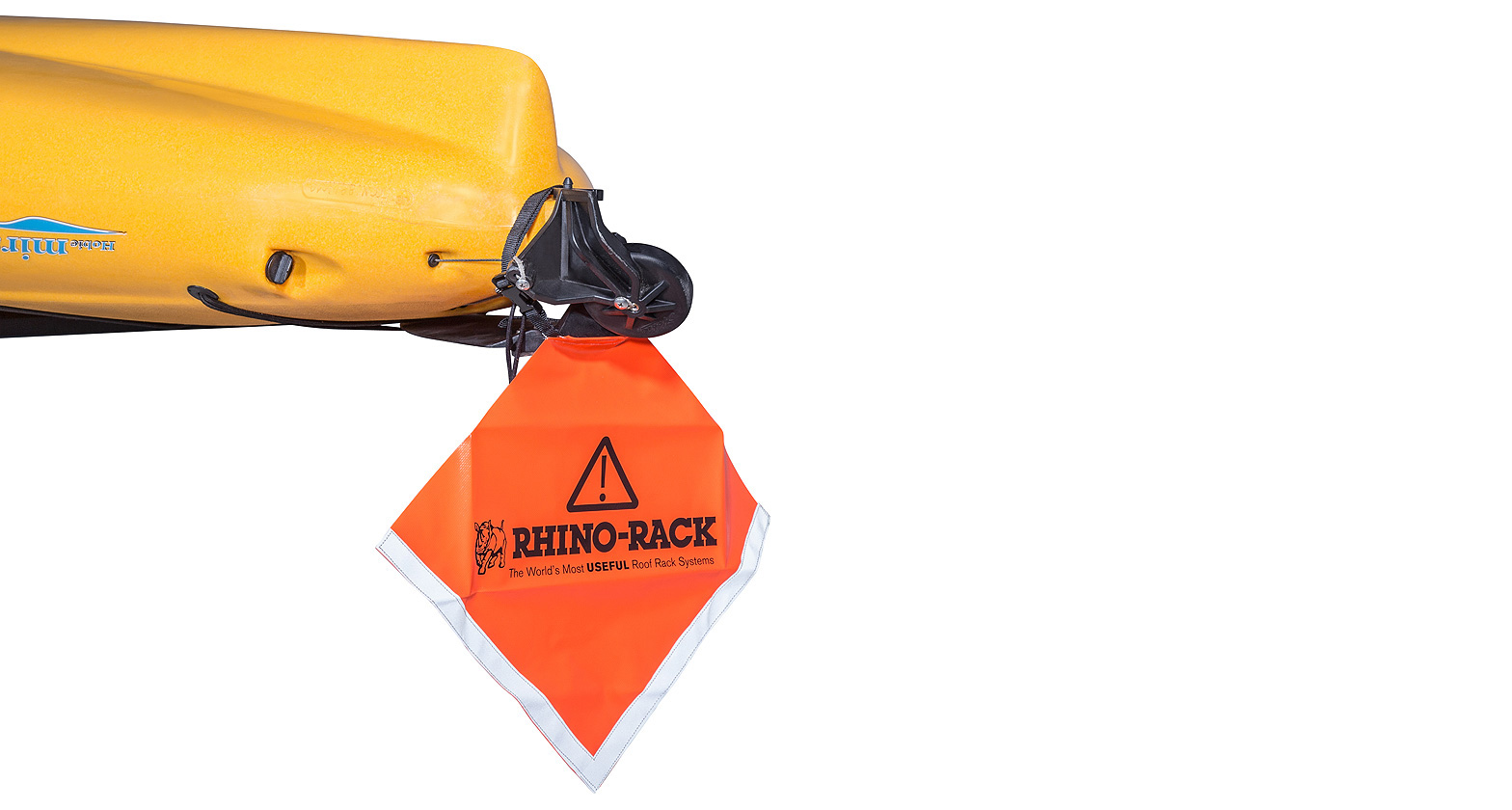Safely Securing a Kayak

Tying down your kayak incorrectly can get you in trouble with the police, cause an accident with another vehicle or damage your kayak. Here you will find instructions to safely secure a kayak to the Nautic Kayak Carrier range and the J-Style Kayak Carrier range.
When positioning the kayak, make sure the weight distribution is even on the kayak carrier. Always use at least two straps to tie down the kayak hull to each roof rack. If the kayak will be left unattended for some time it is recommend to use the Locking Rapid Straps (RTD35L) for added security. These straps have an inner lining of polyurethane coated wire with a lockable casing to help prevent theft.

Nautic Kayak Carrier's
- Nautic 570 Kayak Carrier - Side Loading
- Nautic 571 Kayak Carrier - Rear Loading
- Nautic 580 Kayak Carrier - Side Loading
- Nautic 581 Kayak Carrier - Rear Loading
Strap the body of the kayak by looping the straps around each roof rack. Fasten using the cam buckles and tighten so it is secure without placing too much pressure on the kayak and roof racks. If you cannot reach under the kayak, consider placing the strap down on the far side and walk the straps around the vehicle. The Rhino-Rack Wheel Step (RWS) is suitable for some vehicles to assist in securing loads.
J-Style Kayak Carrier
Strap the body of the kayak by looping the strap through the top of the J rack and then under the roof rack bar. Coil the excess strap, and then use the velcro wraps to hold in place to prevent wind flapping.
When carrying a kayak — or any long load — the front and rear must be anchored to avoid rocking. Rocking can cause damage to the vehicle, kayak, and roof racks.
Some vehicles come with anchor points under the bonnet and boot for towing while other vehicles may need to use alternative securing methods. Rhino-Rack has two alternative securing methods for long loads; the Bonnet Anchor Strap (RBAS) and the Rhino Anchor Strap (RAS).

| Rhino Anchor Strap | Bonnet Anchor Strap |
Use tie down straps to secure the bow and stern to the anchor points, either use points on the kayak to secure the strap or use the Rhino-Rack Bow Strap Bonnet Tie Down (RBAS1). This Kayak Tie Down strap has two cam buckles, one to fasten the strap around the kayak and the other to the vehicle anchor point. Once attached to the kayak pull through the anchor point and twist the strap around itself to reduce vibration. Use the cam buckle to tighten the straps and always coil the excess to prevent damage from wind flapping.
Warning Flag
Lastly, to improve visibility and help prevent damage from other road users when carrying long loads, secure a fluoro Warning Flag (Z175) to the rear of the kayak. In some States and Territories, it is mandatory to have a warning flag on long loads. Always check the local laws.

The Nautic Kayak Carriers and J-Style Kayak Carriers all come with some tie down straps. These straps are essential for safely securing your kayaks. If additional anchor points and straps are required they are available for purchase separately. (#RAS, #RBAS, #RBAS1 and #RBAS2).
Driving Tips
Always check the kayak is secured firmly to the carriers before driving. To check the kayak is secure, move the kayak left to right from the rear and front of the vehicle. The vehicle and kayak should move in unison if the load is secure. As new ropes and straps may stretch and road vibrations may cause straps to loosen, check the kayak is secure again after driving a short distance.
Drive cautiously as longer loads can change the handling of vehicles, especially at higher speeds and in heavy wind conditions. Be mindful the length of your vehicle may have changed, always check how far the kayak protrudes and drive accordingly.
Related links:








